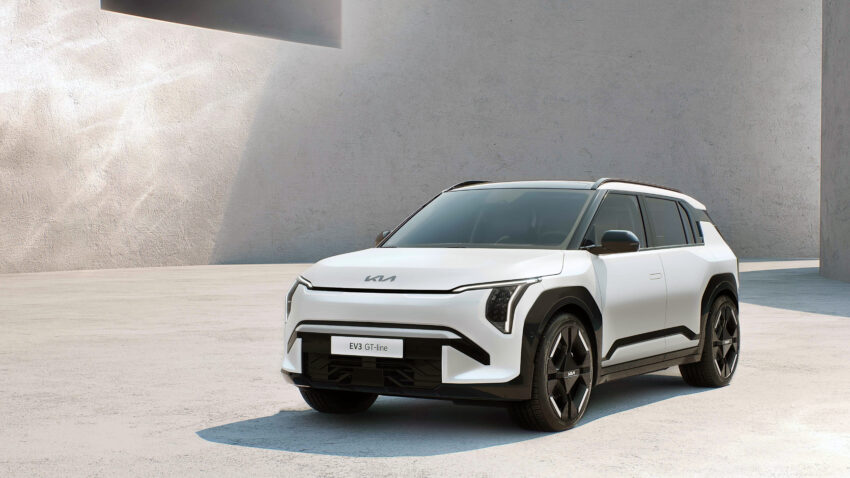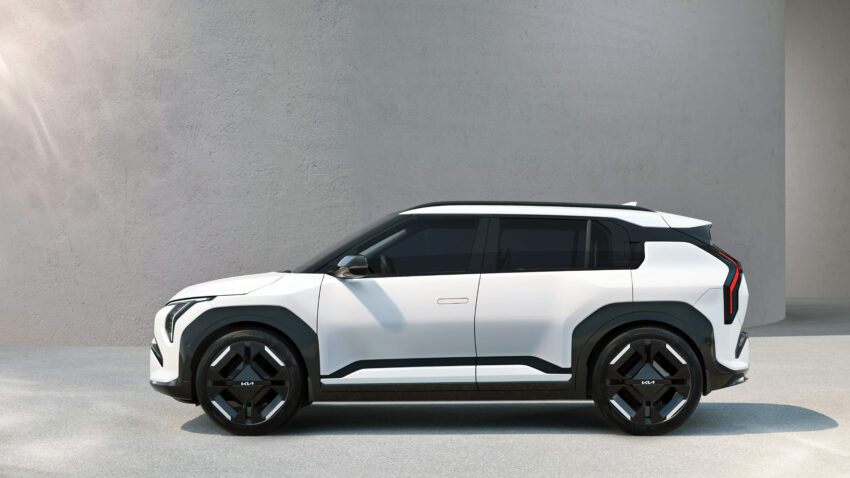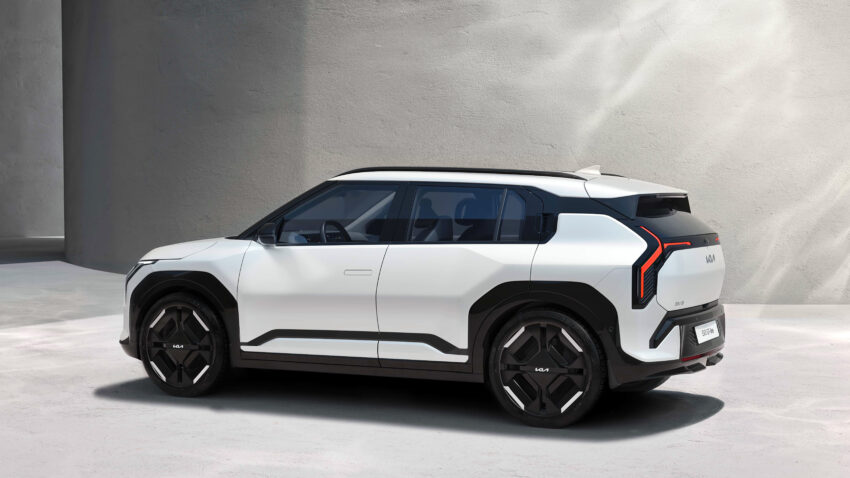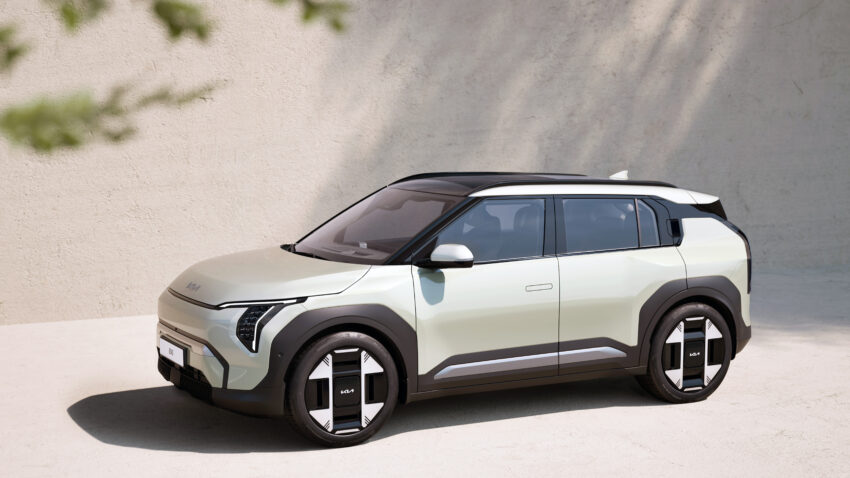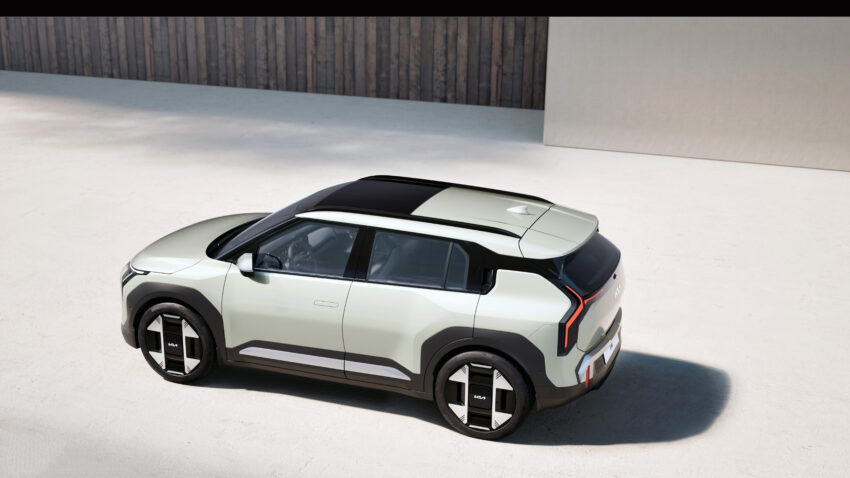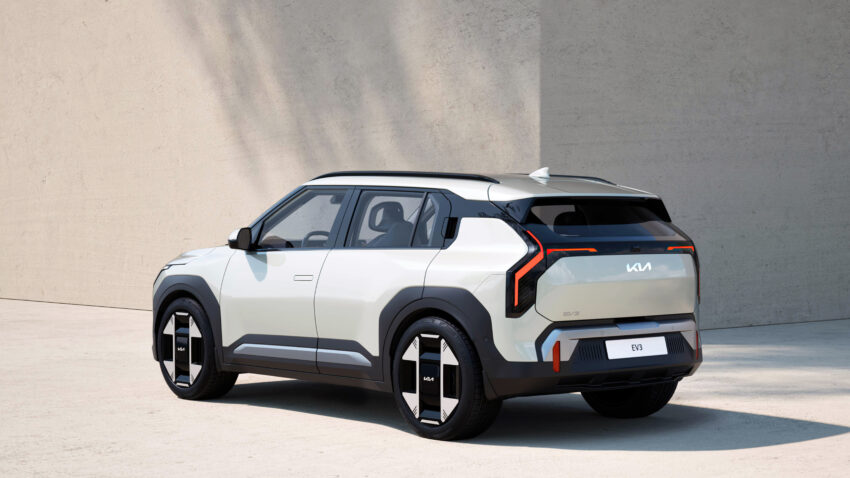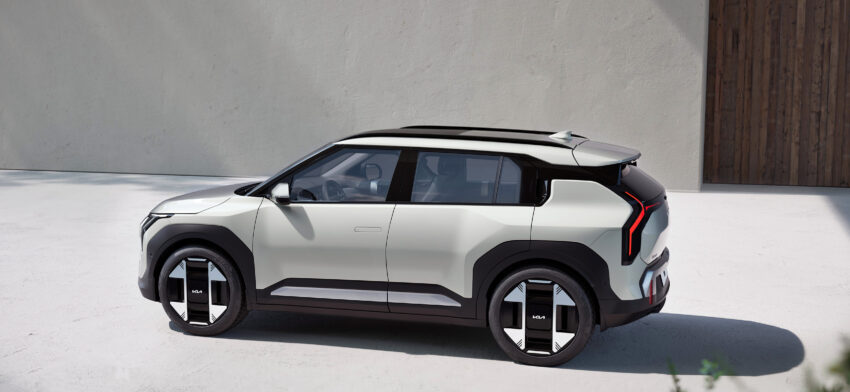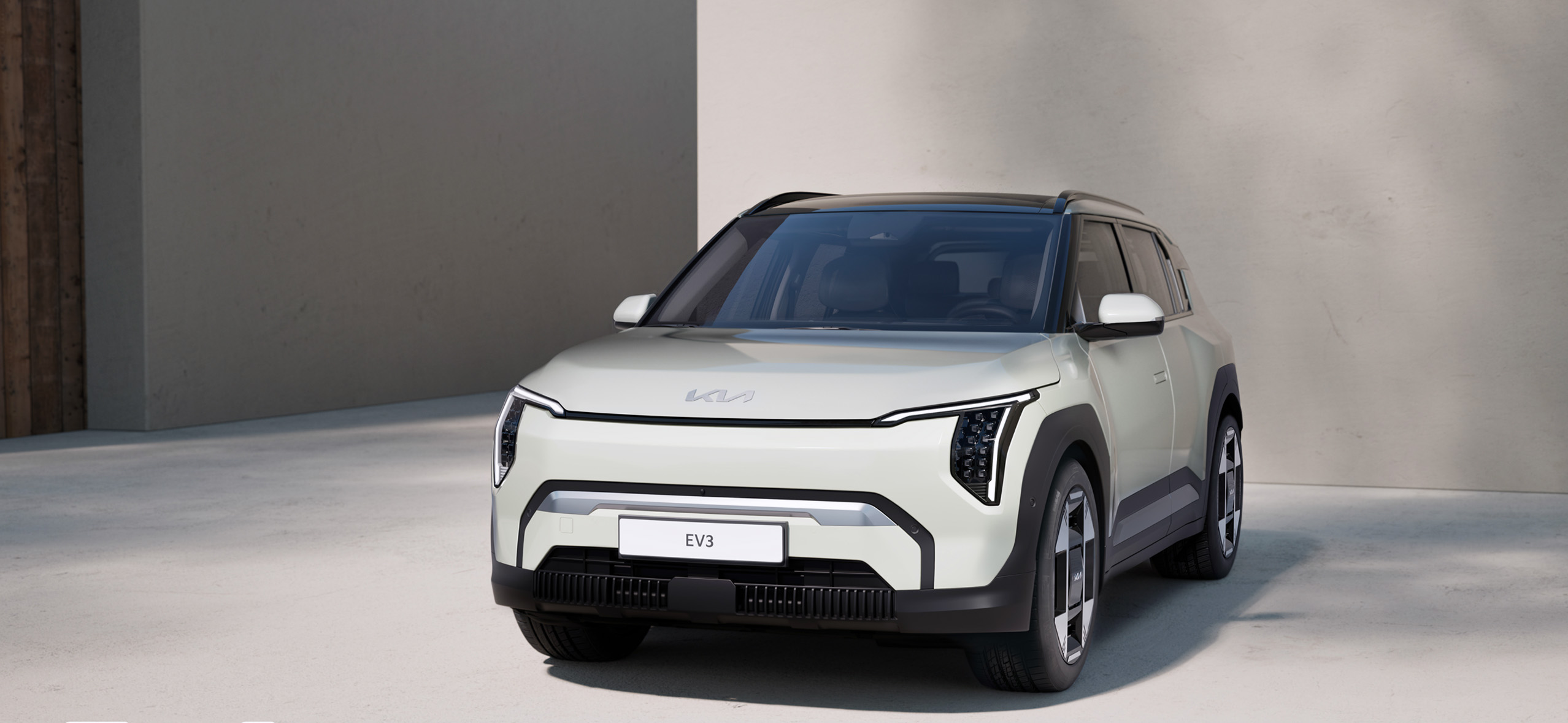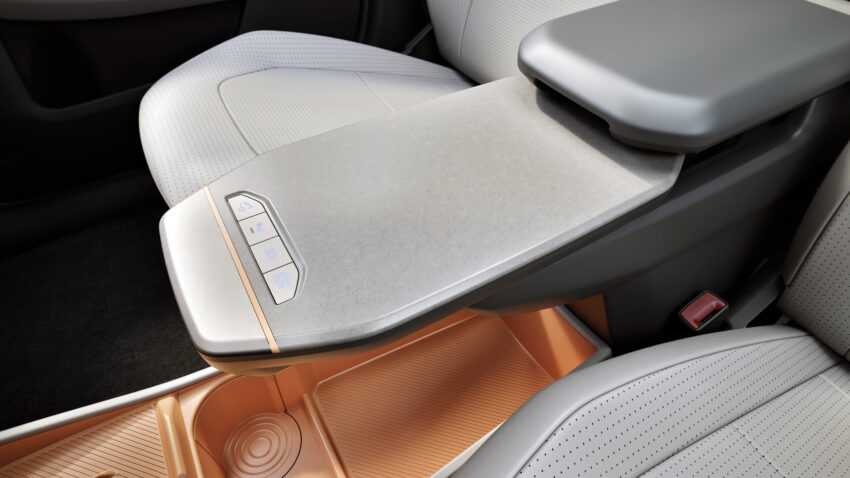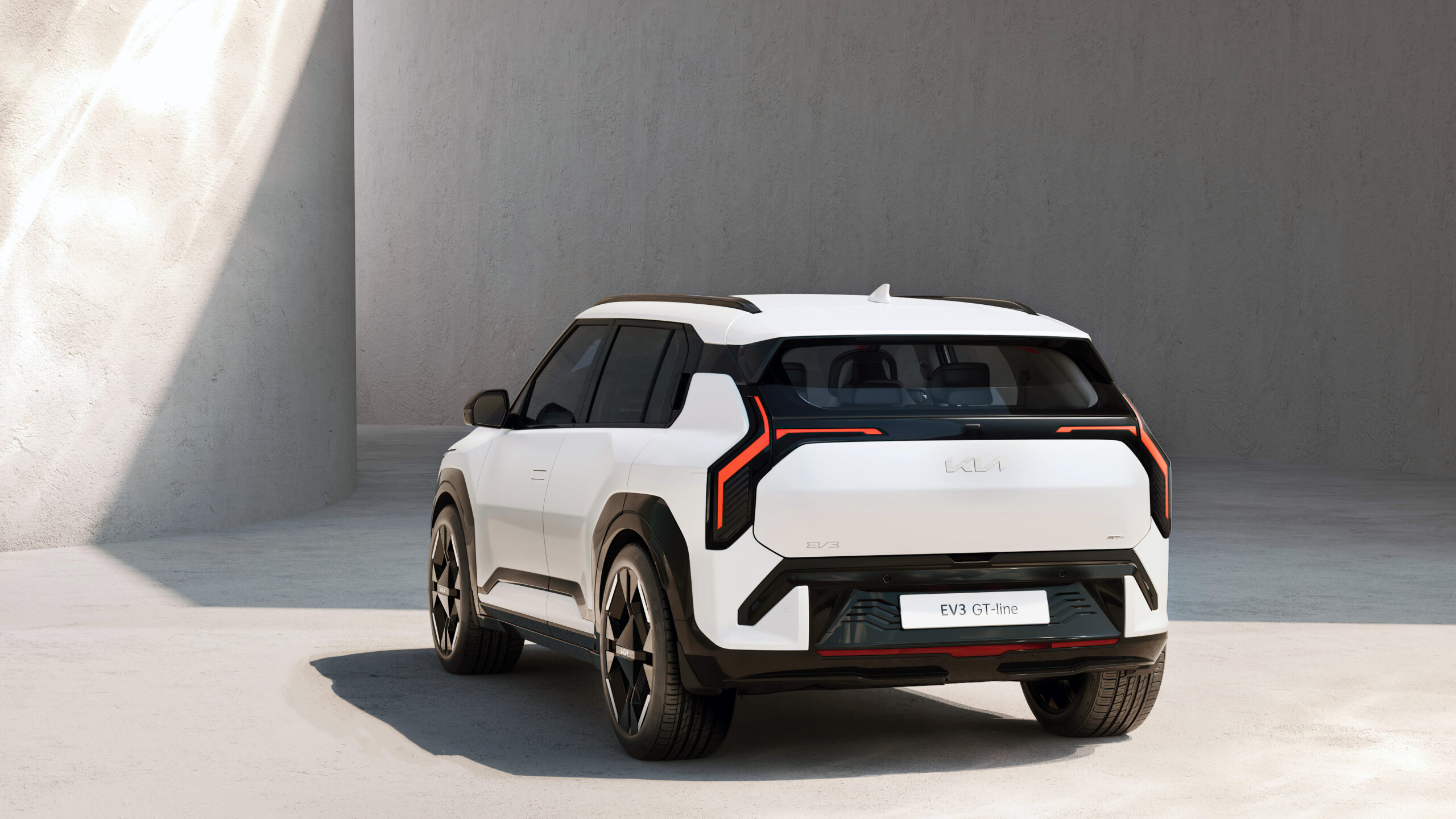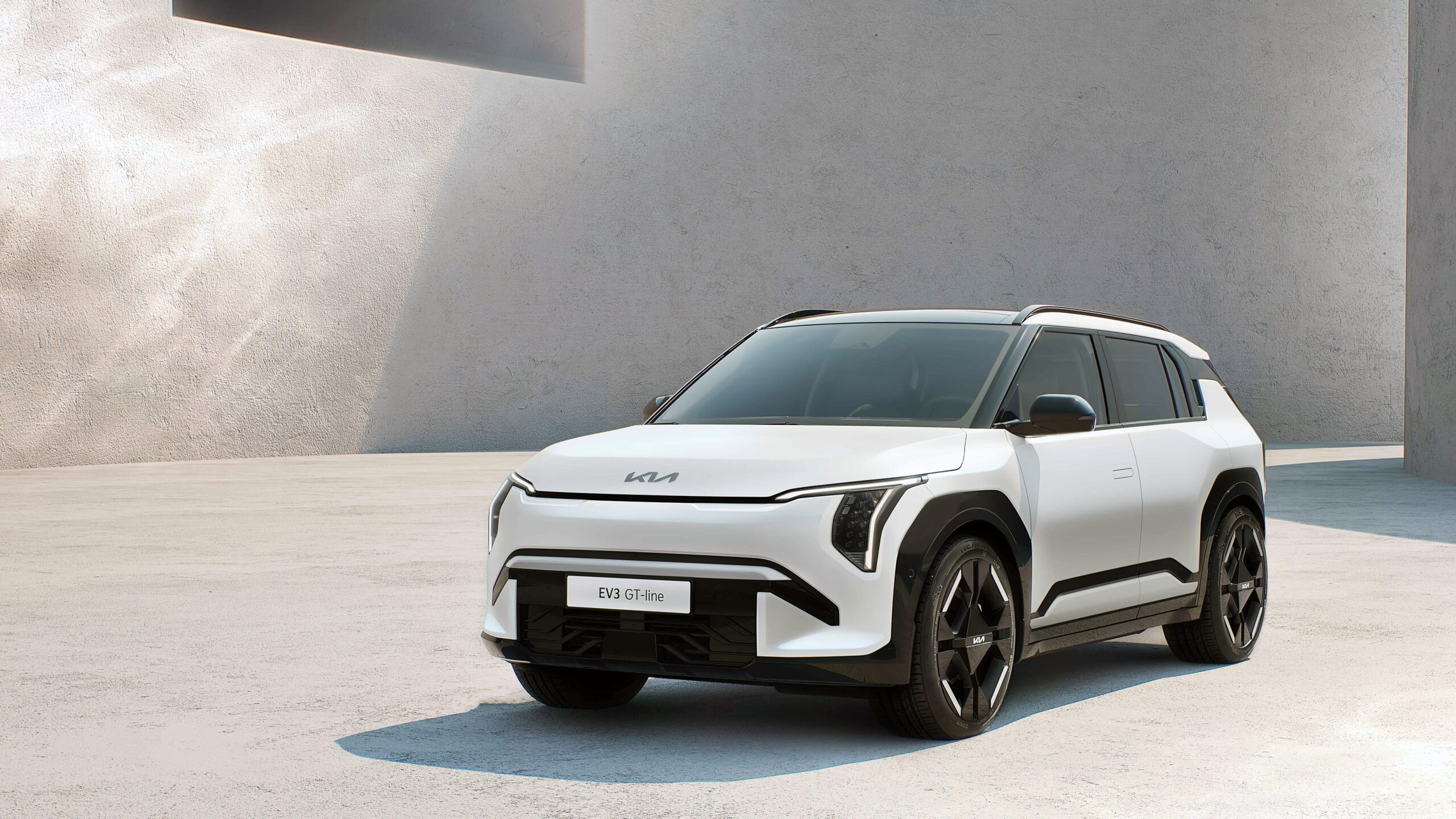
It won’t come to the U.S. unil sometime after next year, but when the just-unveiled Kia EV3 does arrive, it will be positioned as the Kia that can “move millions into the EV era,” according to Karim Habib, Kia’s global design chief.
Some of those millions, of course, will be in Korea, where the boxy but muscular two-row, five seat crossover will launch in July, and in Europe, which gets its first shipment of EV3s sometime late this year.
Kia isn’t talking price yet, but knows that affordability is the key to attracting all those multitudes. That means the compact takeoff on Kia’s recently introduced and widely applauded midsize EV9 SUV is likely to start as low as $35,000 and climb no higher than $50,000.
There’s no word that this is happening, but if Kia decided to build U.S. versions in one of its North American plants – there’s one each in the U.S.and Mexico – the EV3 could qualify for the full $7,500 federal clean vehicle tax credit. That would put the real starting cost at just under $28,000.
Kia unveiled the EV3 this week at a media event in Korea – and Zoom’d-in auto writers from around the globe. The photos and content info we’re able to bring you are of a pre-production model, probably built to Korean market specs, so expect some changes when the U.S. version arrives.
Movin’ It
Initially the EV3 will come only with front-wheel drive, a single-motor powertrain. A dual-motor, electronic all-wheel drive version may surface a bit later.
Horsepower and torque figures haven’t been disclosed, but Kia says the EV3 will have an 81.4 kWh battery and that the U.S. version should be able to deliver least 300 miles of range.
Charging the EV3
While other Kia EVs built on the e-GMP electric vehicle platform co-designed with corporate sibling Hyundai use an expensive 800-volt charging architecture that puts them in or near the lead in DC fast-charging speed in their respective segments, the EV3 will use a 400-volt system to help with affordability.
The difference isn’t enormous, an 800-volt system can take advantage of fast chargers rated at up to 350 kilowatts, while a 400-volt system typically taps out at 150 kW. So while the EV6 battery, for instance, can go from 10% to 80% of capacity in 18 minutes on a high-speed charger – if all the stars are in alignment – it would take the EV3 about twice that time.
EV3 Trims and Features
If the EV3 follows Kia’s existing EV trim scheme, there could be four or more versions, including a base Light and mid-level Wind and Land trims and a sporty GT-Line version. We don’t think the boxy design and entry-level price structure would lead to a powerful GT trim as well, but we could be wrong.
At the Korean event, both “base” and GT-Line trims shown. You can see some of the differences – GT-Line is largely an appearance and content upgrade – in the photos below. The base trim is on the left:
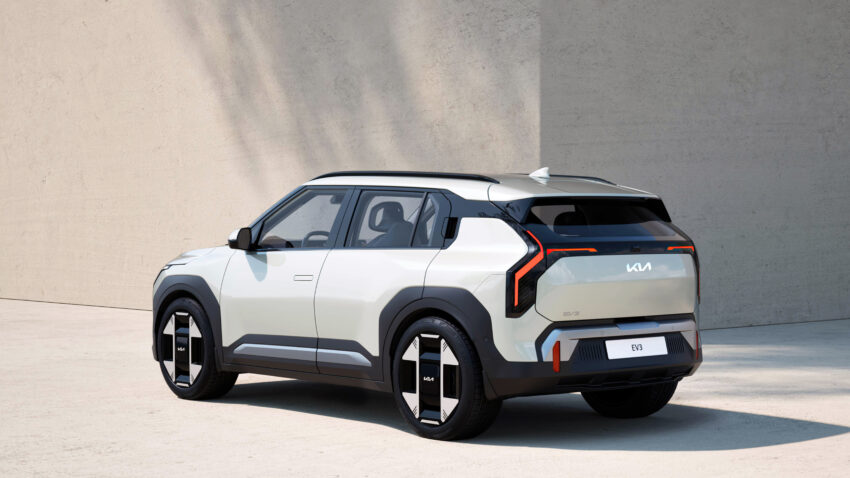
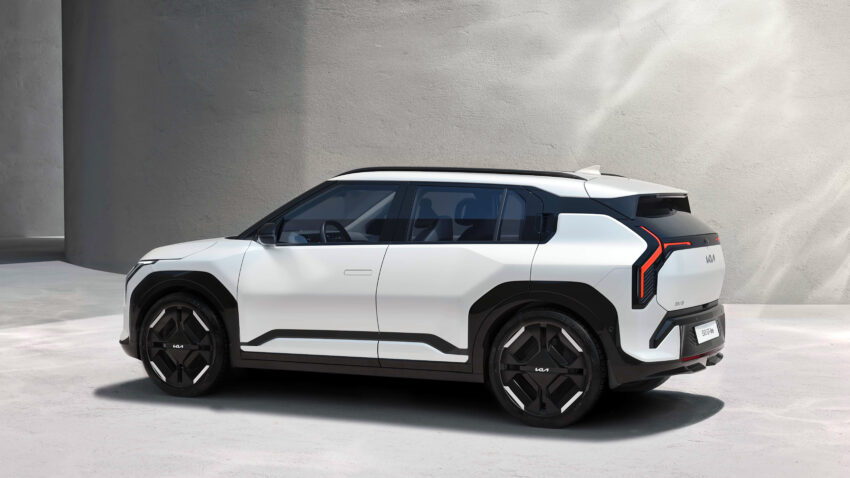
Kia hasn’t disclosed much about the EV3’s features but we know it will have sustainably sourced interior material – a lot made from recycled plastics – along with the 30-inch curved digital information and infotainment screen array used with the larger EV9; a Harman/Kardon sound system, a 12-inch head-up display, one-pedal driving mode with adjustable regenerative braking, over-the-air software update capability, a small front trunk, and what looked in a video clip played during the Zoom conference to be the ability to display movies and videos while parked.
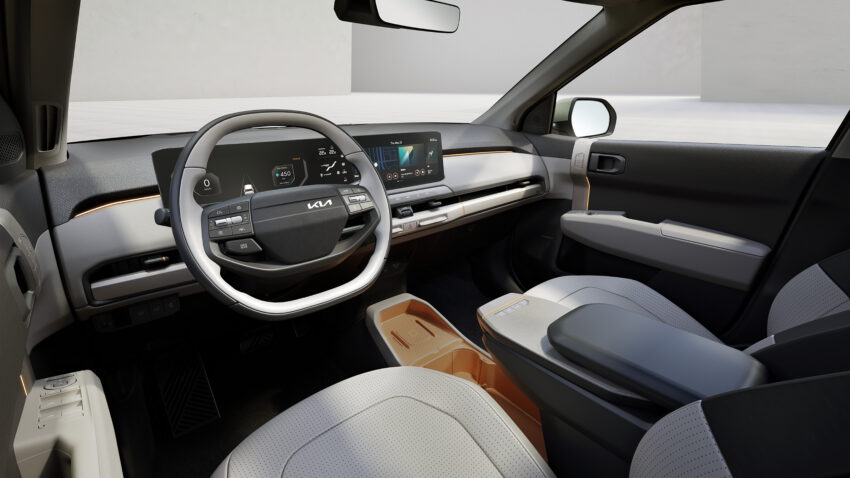
The production model Kia recently unveiled is quite close in appearance to both the EV9 and to the EV3 concept it revealed late in 2023. That mean the EV3 should come to market with a squared-off body and long wheelbase that makes for a roomy interior.
The EV3 appears to be a bit longer and taller than Kia’s subcompact Niro EV, which, despite its smaller stature, starts at $40,975. We’re unclear as to whether a price adjustment is in store if the EV3 really does come in at $35,000. In any event, Kia says the two won’t compete; that the EV3 customer will shopping electric only while Niro EV customers are “less EV explicit” and make the electric choice after looking at internal combustion competitors and the Niro’s two gas-electric hybrid variants – conventional and plug-in.
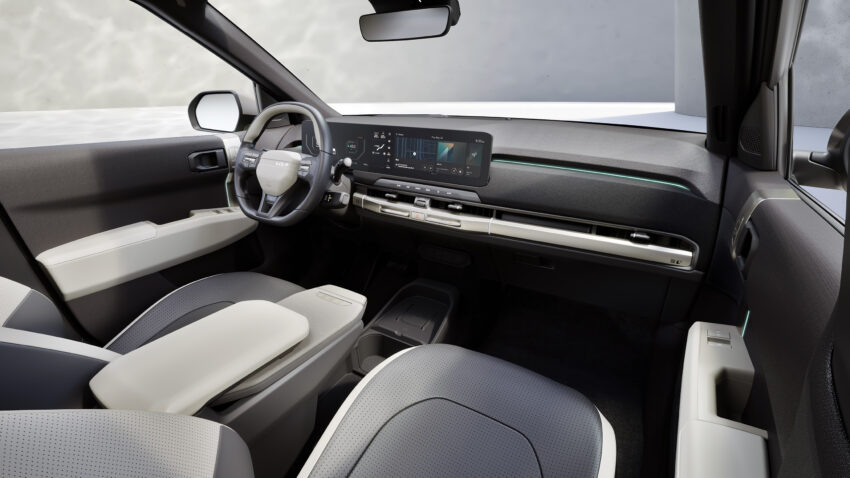
The glimpse we got of the production version’s interior showed reclining bucket seats upfront, a long, floating center console with a pull-out table, a bench seat in the rear (the concept’s rear bench folded out of the way to enlarge the cargo area, and Kia recently said the EV3 will have “best-in-segment” cargo capacity.
A 30-inch, slightly curved digital screen array – like the one that debuted in the EV9 – will dominate an otherwise plain floating dash. eh screen array includes 12.3-inch driver information and infotainment screens separated by a 5-inch screen for climate system controls.
Much of the interior will be fabric-covered, the fabrics and plastic parts made from recycled materials (Kia has a contract with the Ocean Cleanup Project to purchase recycles plastics retrieved from the giant Eastern Pacific Garbage Patch).
Techie Stuff
There’s not much detail available yet in regard the Kia EV3’s tech package, but it isn’t likely to differ much from the well-received tech content in the EV6 and EV9. That means, at a minimum, a 12.3-inch infotainment touchscreen that controls many vehicle functions but a physical set of switches and dials that, at the touch of a button, can adjust either audio or climate control systems. Apple CarPlay and Android Auto compatibility should be standard, along with a Wi-Fi hotspot and wireless phone charging, multiple USB ports, a decent audio system and. in higher trims at least, vehicle-to-load capability so the EV3’s battery can be used to power 120-volt appliances, tools and entertainment equipment.
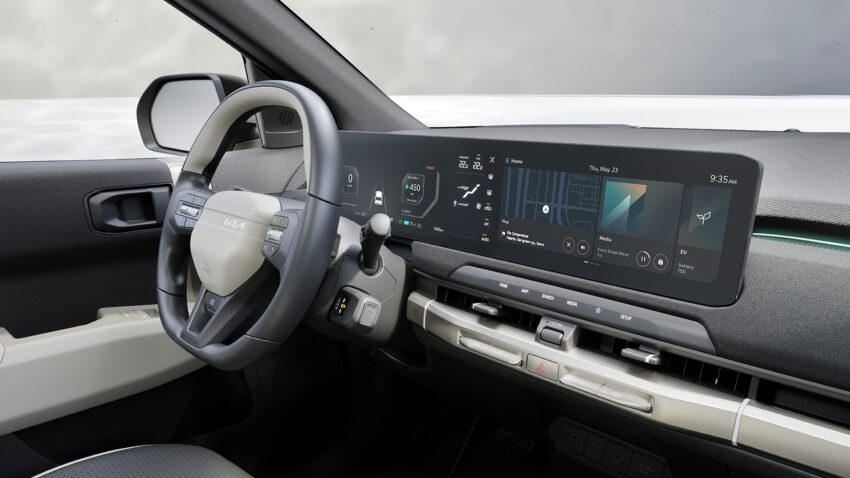
Safety Stuff
The Kia EV3 hasn’t been crash tested yet but other Kia EVs built on the same electric vehicle platform –shared with Hyundai – have turned in stellar crash test results.
We expect standard advanced safety and driver assistance technology on the EV3 to include Kia’s semi-autonomous, hands-on Highway Driving Assist 2 system, which includes adaptive cruise control with full stop and go capability and lane-following, lane centering and lane-change assistance technologies. Also on tap should be blind-spot warning; lane-keeping assist; forward-collision avoidance assist with lane-change and intersection traffic avoidance and car, pedestrian and cyclist detection; rear cross-traffic collision avoidance; parking distance warnings; and rear occupant and rear exit safety alerts. Upper trims will likely have available goodies such as a head-up display, parking collision avoidance, remote parking, and surround-view and blind-spot monitors.
What We Think
There aren’t many entry-level compact electric SUVs in the U.S. market right now, although there likely will be a few more in 2026, when the EV3 is likely to land here. For now, though, the likeliest competitors the Nissan Leaf (due to be replaced with a small electric SUV in 2026), the Mini EV, Hyundai Kona and Kia Niro electrics and the upcoming Chevrolet Equinox EV. Rivian’s R3 small SUV, promised for the 2027 model year and expected to be piced in the same range, also could be a strong competitor by the time the EV3 lands here.
We haven’t driven one, but if Kia’s other EVs are anything to go by, and that relatively low pricing holds true, the other guys ought to watch out.
